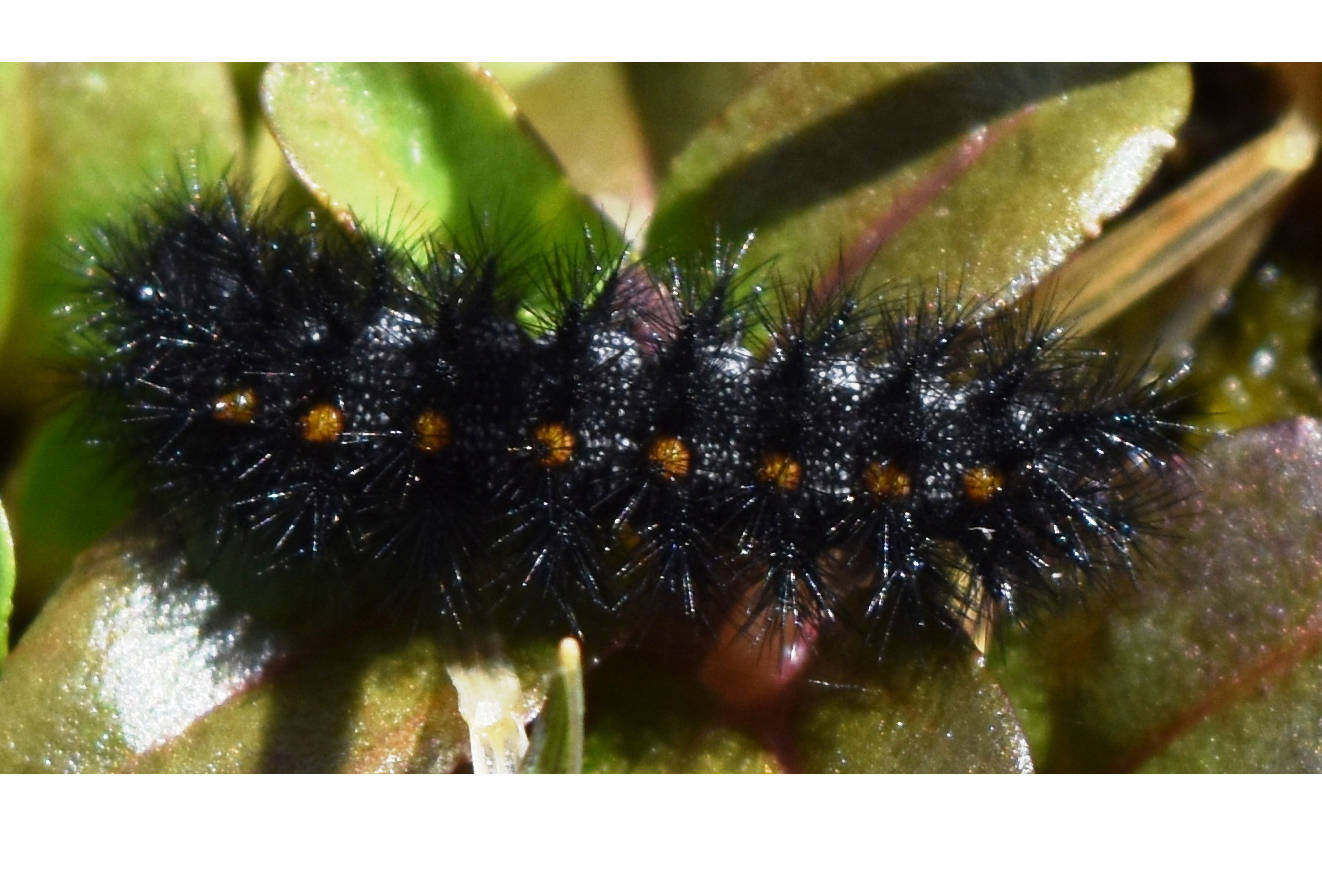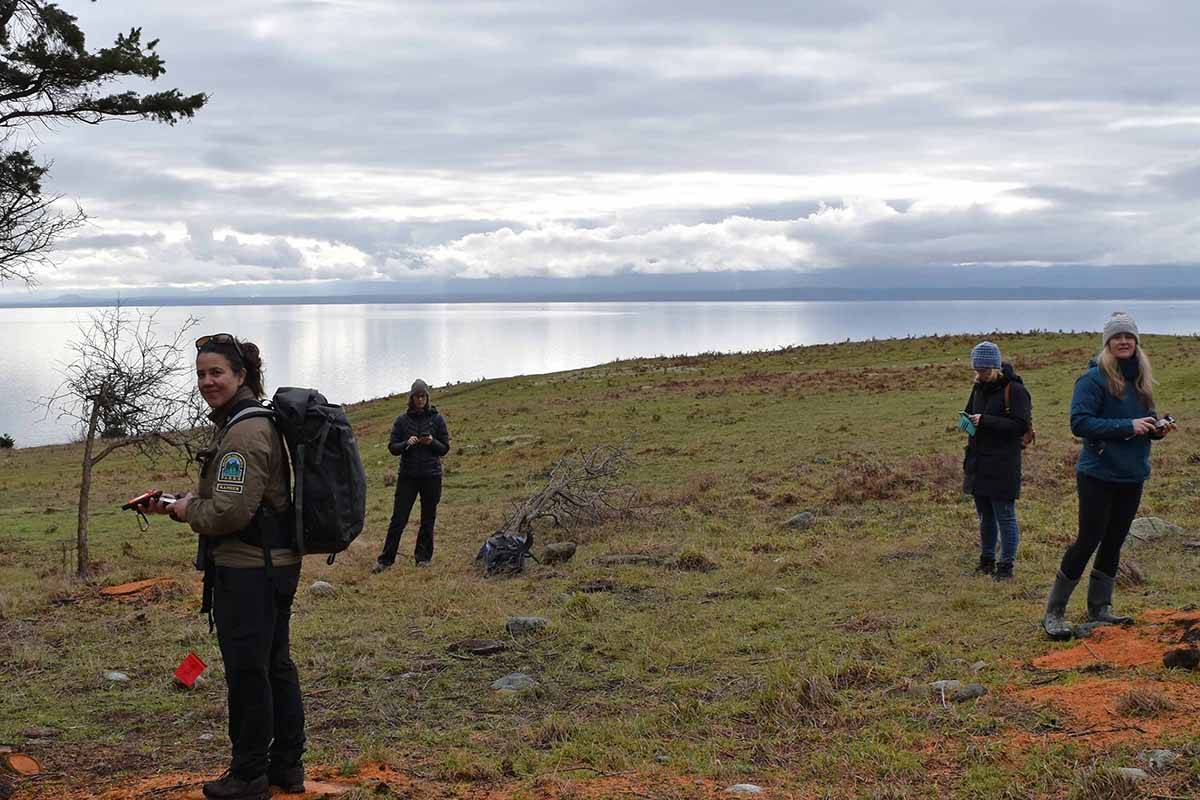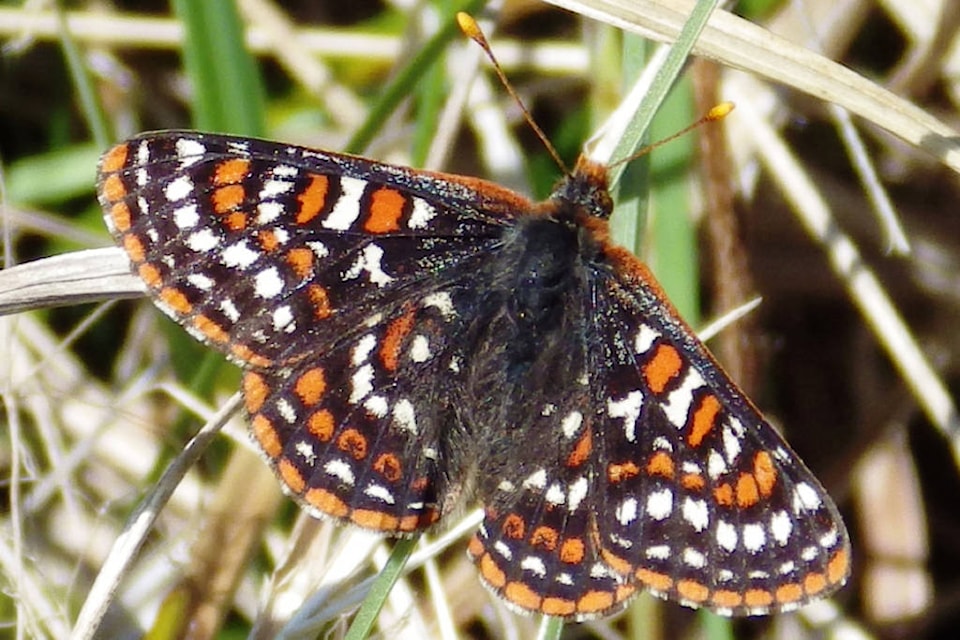Hornby Island is about to play a major role in the saving of a butterfly species.
This March, up to 8oo Taylor’s checkerspot butterfly caterpillars will be relocated from the Greater Vancouver Zoo where they were raised, to their new home in Helliwell Provincial Park, on Hornby.
The federally listed endangered butterflies haven’t been seen in the park for more than two decades. It was their last known location in Canada when they disappeared from the area in the mid-1990s. Biologists feared that they were gone forever from the country. Fortunately, two Taylor’s checkerspot populations have been found in the past 15 years; one on Denman Island and one near Campbell River. Biologists are regarding the return to Helliwell as a biological insurance policy.
ALSO: Research shows climate change silencing spots once buzzing with bees
One of the greatest threats to the caterpillars and their food plants is trampling. Park visitors and their pets can help reduce this risk by staying on the marked meadow trails delineated by ropes and “restoration area” signs. Please note that dogs must be on a leash according to provincial park regulations. Please do not move or pick up Taylor’s checkerspots. Take photos instead to report sightings to Taylors.Checkerspot@gov.bc.ca.
Years of planning, preparation, considerable funding (federal, provincial and non-governmental sources), and collaborative efforts by the Taylor’s Checkerspot Recovery Project Team was required to reach the goal of bringing the butterflies back to Hornby Island. Butterfly experts from the BC Ministry of Environment and Climate Change Strategy, U.B.C, and consultants on the Garry Oak Ecosystems Recovery Team began developing recovery strategies and plans for the species in 2005.
Meadow habitat restoration activities such as selective tree limbing and removal by BC Parks staff and contractors; weeding; and installing native plants and seeds by community volunteers, Hornby Island Natural History Centre, local schoolchildren, and consultants from Saanich Native Plants have occurred since 2015. Peter Karsten on Denman Island initiated the Taylor’s checkerspot breeding and rearing program in 2013. It continues at the Greater Vancouver Zoo with support from Wildlife Preservation Canada. Monitoring the butterfly populations has been ongoing for decades.
Hopefully enough funding will be secured to monitor the butterfly populations and to continue with habitat restoration and butterfly reintroductions for several years until the Taylor’s checkerspot population is securely re-established on Hornby Island. The hope is for future generations of visitors to Helliwell Provincial Park to see the striking orange, black and white butterflies flying from flower to flower to seek nectar. The tiny winged jewels are a joy to watch and a sign of a healthy coastal bluff meadow ecosystem.
This recovery project benefits hundreds of species that range within the rare coastal bluff ecosystems of British Columbia. Although focused on Taylor’s Checkerspot, other beneficiary species include Dun Skipper and about a dozen other range-restricted butterflies, Western Bumble Bee, many native plants, Western Screech-Owl and numerous other birds.


